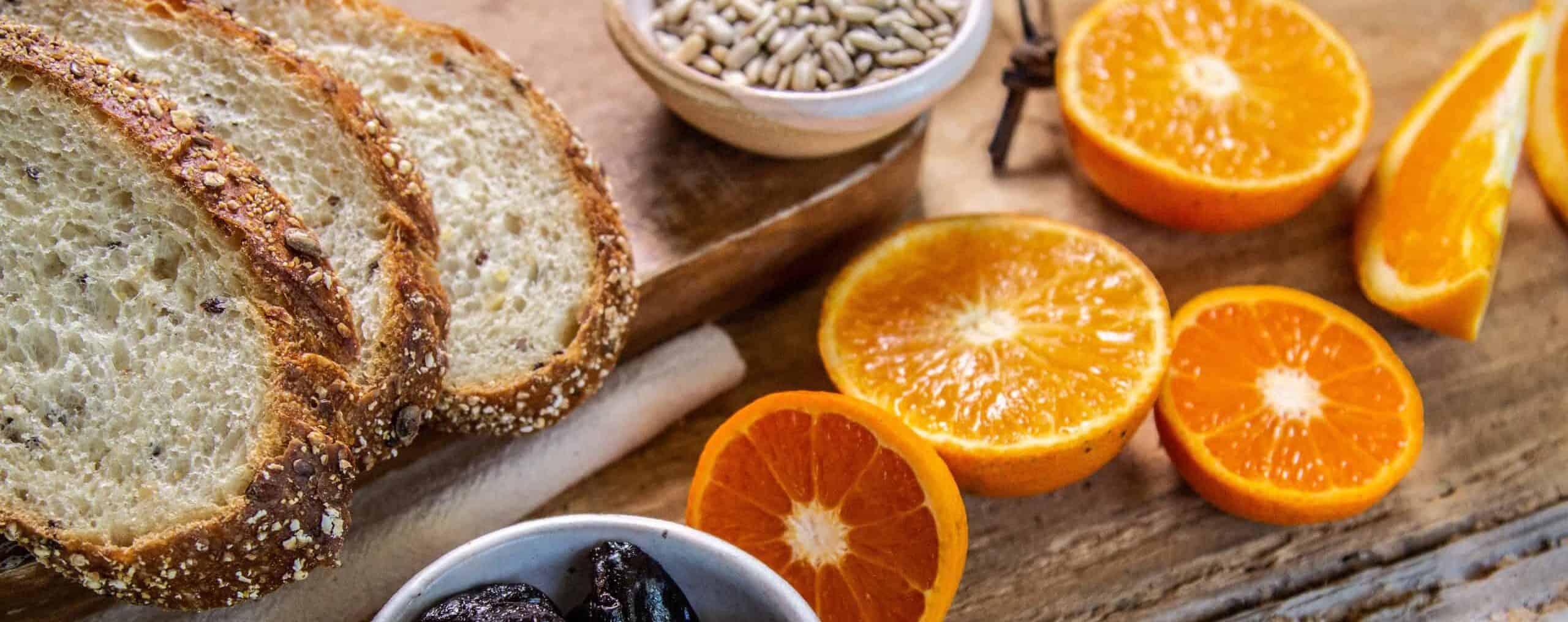
The Prebiotic Bone Building Power of California Prunes
You may have already known prunes were healthy, or that California prunes are a prebiotic food. Now expert research confirms it.
A recent animal study finds carbohydrates and polyphenols found in prunes act as prebiotics helping to restore bone health¹
By Andrea N. Giancoli, MPH, RD, Nutrition Advisor, Research and Communications, California Prunes
Well, obviously.
This may be one of those “no duh” moments when scientific research seems to point out the obvious. Right now, you may be thinking “of course prunes are prebiotic – they are the original good gut food after all.” Now, there is empirical evidence to support defining prunes as a prebiotic food and why. With that said, it is important to revisit and appreciate what classifies a food and its compounds as being prebiotic. The definition has been evolving over the years and in 2017, the International Scientific Association for Probiotics and Prebiotics released a consensus statement defining a prebiotic as “a substrate that is selectively utilized by host microorganisms conferring a health benefit.²”
About the prebiotic power of prunes:
The key phrase here is “conferring a health benefit.” In the recently published animal study, Dried Plum’s Polyphenolic Compounds and Carbohydrates Contribute to Its Osteoprotective Effects and Exhibit Prebiotic Activity in Estrogen Deficient C57BL/6 Mice, the conferred health benefit of bone loss reversal was attributed to alterations in the gut microbiota after consumption of prunes or prune compounds. The link between gut microbial health and bone metabolism is not news and has been well documented in literature³. Prunes have been found to both stimulate beneficial gut microbiota changes and to be bone protective in previous preclinical and clinical studies. But what plant compounds in prunes are responsible for these benefits? The prune’s positive effects have largely been attributed to their polyphenols. However, the exact mechanisms and contribution of other important prune nutrients (e.g., carbohydrates, vitamins, minerals) have been unclear.
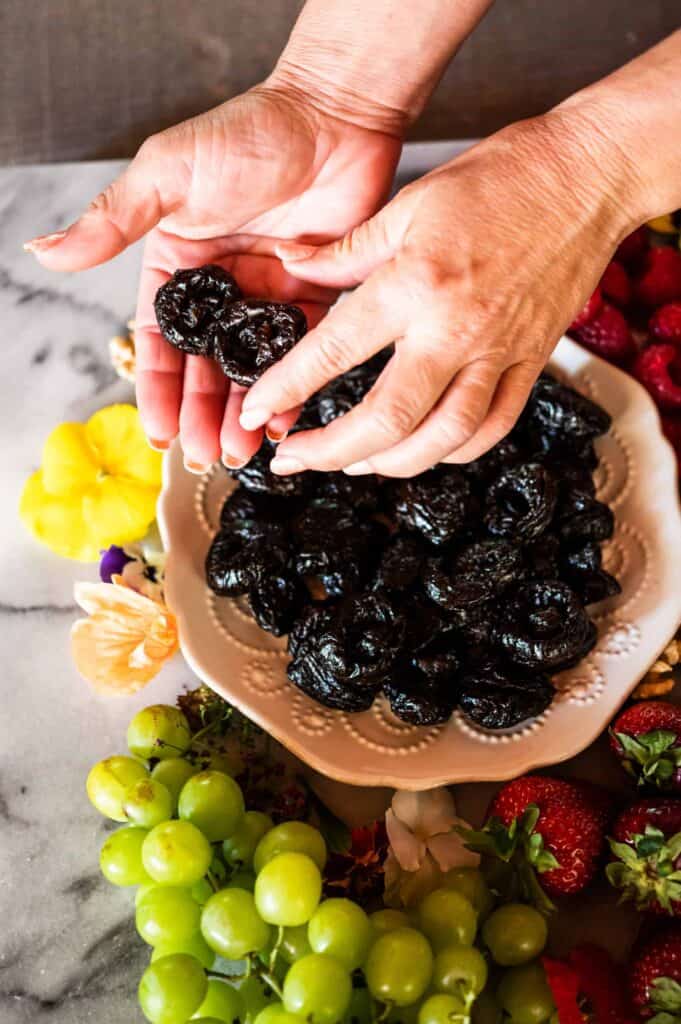
For this reason, the researchers isolated both the polyphenol (PP) and the carbohydrate (CHO) components from prunes to test whether one or the other was responsible for the favorable gut and bone health outcomes seen with whole prune consumption.
In this animal feeding study, adult female mice with significant bone loss from estrogen hormone deficiency were assigned to one of five diets for 5- and 10-week durations:
- Control (no prunes or prune components)
- Control + prunes (25% by weight)
- Control + prune crude extract (contained both polyphenols and carbohydrates)
- Control + isolated PP
- Control + isolated CHO
All five diets were comparable in macronutrients. Compared to the mice on the control diet, the mice consuming prunes, prune crude extract, isolated PP, or isolated CHO experienced restored bone loss, exhibited prebiotic activity via producing short chain fatty acids (SCFAs), and had favorable alterations in their gut microbiota. Notably, the SCFAs n-butyrate and proprionate were increased significantly in the gut. These are thought to be most effective at preventing bone loss by suppressing bone biomarkers that are associated with bone breakdown.
Bone restored early in the trial:
Interestingly, the researchers reported that the CHO independently showed the ability to restore bone early in the trial. In contrast, the effect of the PP on bone became evident and more important later. Principal Investigator Brenda Smith, Ph.D., Professor, Indiana University School of Medicine explains, “the bottom line is that it’s both the carbohydrate component and the polyphenols within the prune that are altering gut microbiota resulting in very positive effects on bone, restoring bone. So even though we think they’re both having prebiotic activity, those prebiotics are probably occurring by different mechanisms.”
Smith added that her findings make a strong case for consuming whole prunes, “because you’re getting some of the benefit from the carbohydrate in the short term, and the long–term benefit from the polyphenols.” She noted that other prune nutrients (e.g., minerals, vitamins) and compounds likely play roles that are beneficial for both bone and the gut. This research gets us closer to understanding what is unique to prunes while underscoring why it is important to eat the fruit in its entirety to reap their array of benefits.
References:
- Smith BJ, Hatter B, Washburn K, Graef-Downard J, Ojo BA, El-Rassi GD, Cichewicz RH, Payton M, Lucas EA. Dried Plum’s Polyphenolic Compounds and Carbohydrates Contribute to Its Osteoprotective Effects and Exhibit Prebiotic Activity in Estrogen Deficient C57BL/6 Mice. Nutrients. 2022 Apr 19;14(9):1685. https://www.ncbi.nlm.nih.gov/pmc/articles/PMC9102795/
- Gibson G, Hutkins R, Sanders M et al. Expert consensus document: The International Scientific Association for Probiotics and Prebiotics (ISAPP) consensus statement on the definition and scope of prebiotics. Nat Rev Gastroenterol Hepatol 14, 491–502 (2017). https://doi.org/10.1038/nrgastro.2017.75
- Zhang J, Lu Y, Wang Y, Ren X, Han J. The impact of the intestinal microbiome on bone health. Intractable Rare Dis Res. 2018;7(3):148-155. https://www.ncbi.nlm.nih.gov/pmc/articles/PMC6119671/
Recipes to help increase your prune intake:
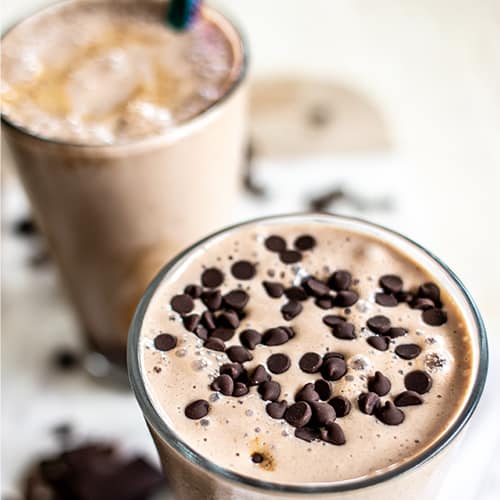
Chocolate Superpower Smoothie, Served 2 Ways:
This delicious Chocolate Superpower Smoothie is full of bone-building goodness, thanks to the matchup of prunes and Real CA Dairy. Plus, the recipe goes two ways: with a shot of espresso for adults and a few chocolate chips for kids (or those with a sweet tooth).
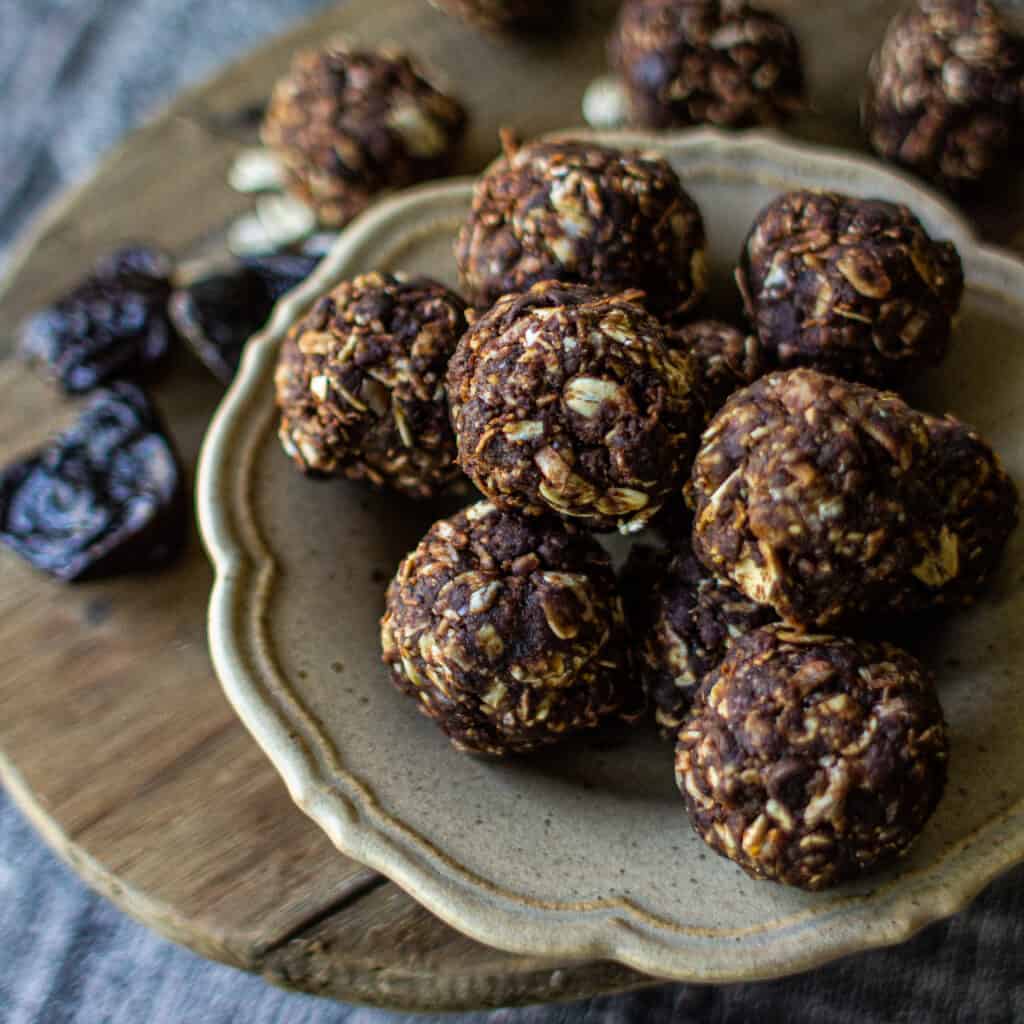
Chocolate Energy Balls
These Chocolate Energy Balls are healthy, incredibly easy and totally delicious. Prunes, chocolate and pecans add loads of flavor, while oats and peanut butter work as a binder and help to keep you fuller, longer.
These Prune + Almond Energy Balls are a delicious prebiotic boost too!
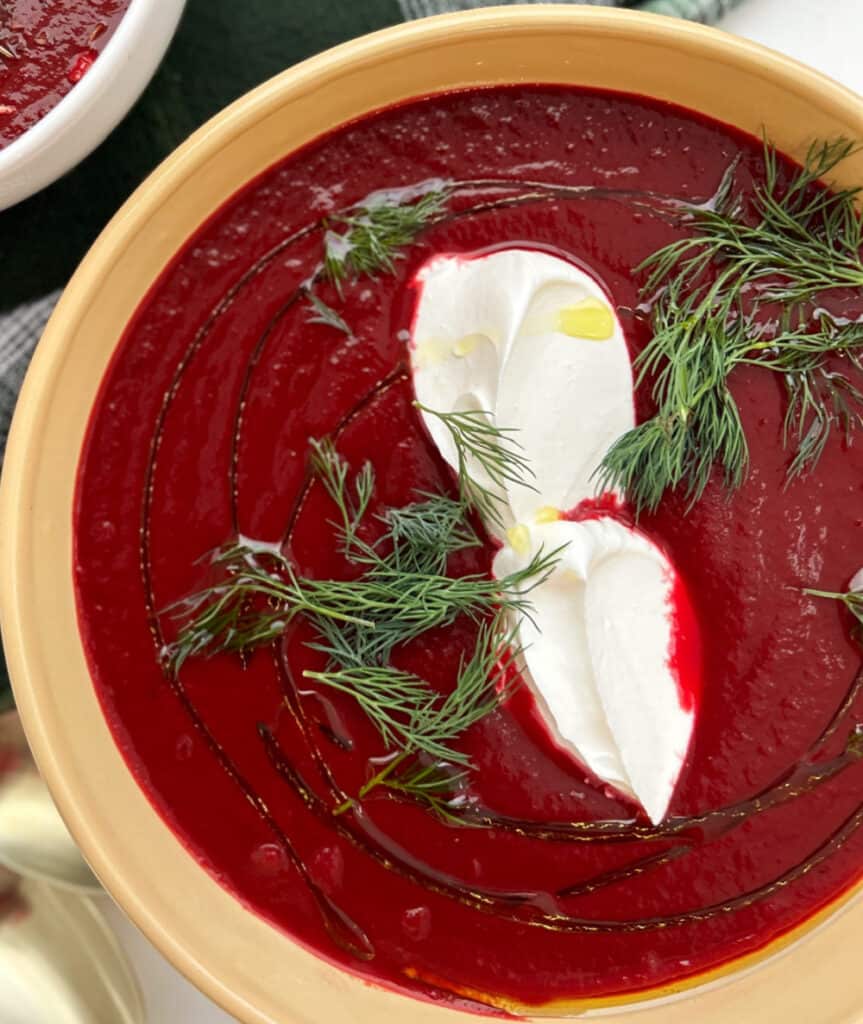
Traditional Ukrainian Borscht
This traditional Creamy Ukrainian Borscht recipe from Jaíne Mackievicz, winner of the Food Network’s Julia Child Challenge, pays homage to her grandmother Rosa, who served the soup often. Rosa’s not-so-secret ingredient for getting depth of flavor in this vegetarian borscht recipe was a handful of prunes – and that’s just how Jaíne makes the soup as well. Try her Arroz de Festa too!